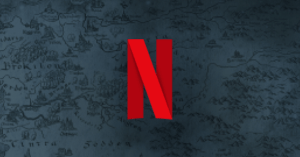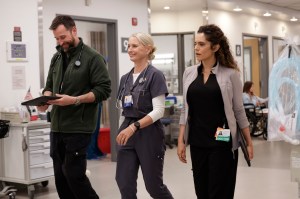In the first installment of a series of short-form documentaries called Take Action, Yellowstone cast member Ian Bohen learns how to protect Yellowstone National Park. In Take Action: Save Yellowstone National Park, biologists told Bohen about how the park relates to the larger issue of climate change — and how he and others can help.
Although Bohen marveled at the beauty of the national park that he’s known and loved since he was a boy — and especially over the past two years as portraying a ranch hand on the Paramount Series — he admitted that “today, something is amiss. Yellowstone has seen changes that have hunters and ranchers, scientists and park visitors alike, concerned, not just for the future of the park, but for the planet itself.”
Videos by PopCulture.com
He spoke to Erik Oberg, the founder of the Phenology Project at Yellowstone, who studies the changing environment and says that his team has gathered “really clear evidence” that the “pace of change” in nature at the park “is happening faster.” Oberg said that spring is arriving “about a month sooner than it did 30 years ago… so a month change in about 30 years of time.”
Dr. Mike Tercek, a Ph.D. in ecology and evolutionary biology who spent the last 20 years studying Yellowstone, stressed the importance of taking action to protect the park. “If we can’t protect this and do the things to maintain it, what does that mean for the rest of the world, the life support system that keeps us alive?” he asked.
Tercek told Bohen that the “biggest” factor that points to the current situation being “the early stages of a catastrophe” rather than just a small anomalous blip on the radar “is the rate of change that we’re talking about, and it’s very well correlated to industrial activity.”
“If you run the climate projections out into the future, under a business-as-usual scenario, you’ll have years that are as dry as 1988, which was considered a 300-year event,” Tercek said. “By 2050 or so that’ll happen every three to five years, which means that it will become a charred moonscape. So you would just lose all the majesty of our forest.”
“I think a lot of people will say, ‘Well, it’ll still be wild and it’ll still be different,’ but I have to disagree,” he continued. “We’re in the early stages of what I consider to be a catastrophe. And you can’t hide how you feel about this anymore. This, for me, has to work out a certain way. We need to stop the problem before it gets to that point.”
“That point” could come as soon as 20 or 50 years, Yellowstone park ranger and wildlife biologist Chris Geremiah told Bohen.
“We know that the temperatures and precipitation patterns have changed fairly drastically in northern Yellowstone over the last 100 years. So that’s probably happening more rapid relative to how animals are learning,” Geremiah said. “That does mean the animal populations in Yellowstone 20, 50 years from now may look entirely different than they do today.”
But Bohen pointed out that there’s still hope and plenty of ways to get involved in the fight to preserve Yellowstone and the environment as a whole — specifically, by checking out Citizens Climate Education, which gives ordinary citizens the power to educate political leaders, the media and the general public about climate change solutions.
Take Action: Save Yellowstone National Park is the first installment in Paramount Network‘s series of short-form documentaries addressing important social issues related to the network’s content themes. Stay tuned for more installments in the Take Action series.








